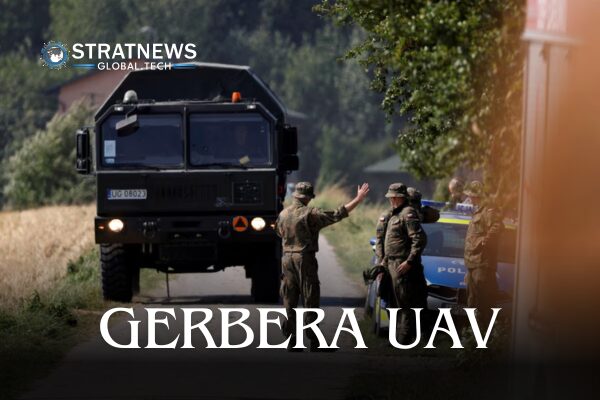Gerbera Drone: What We Know About Russia’s Low-Cost UAV Spotted in Poland
A suspected Russian drone incursion into Polish airspace on Wednesday has raised serious concerns across NATO. According to a Polish army official, the incident involved the use of Gerbera drones—low-cost, long-range unmanned aerial vehicles developed by Russia. The event marked a troubling moment, as the war in Ukraine appeared to extend onto NATO territory.
What Is the Gerbera Drone?
The Gerbera drone is designed for affordability and range. Ukrainian intelligence reports that it is made from simple materials such as plywood and foam. These drones are assembled at Russia’s large Yelabuga facility and are easy to manufacture in high volumes.
Key specifications of the Gerbera include a 2.5-metre wingspan, a maximum weight of 18 kilograms, and a top speed of 160 kilometres per hour. It has a maximum range of 600 kilometres and is powered by a small rear engine that turns a wooden propeller.
Role in Russian Drone Strategy
Western and Ukrainian analysts say Russia uses the Gerbera to overwhelm air defences. These drones are often deployed in groups to act as decoys, drawing fire away from more advanced UAVs such as Shahed drones, which carry heavy warheads. However, newer variants of the Gerbera have reportedly been fitted with light explosives or reconnaissance equipment, suggesting they serve multiple purposes.
“Gerberas are usually employed as part of a mix of systems,” said Fabian Hinz, a research fellow at the International Institute for Strategic Studies. He noted that the Polish incursion could have involved other drone types not yet identified.
International Supply Chain Concerns
Ukraine’s intelligence agency has linked the Gerbera’s assembly kits to Chinese company Skywalker Technology. Although Beijing denies providing military support to Russia and claims to be neutral in the conflict, the involvement of a Chinese manufacturer has drawn attention.
Further investigation revealed electronic components from US and European companies inside the drone. This discovery raises questions about the effectiveness of export restrictions on dual-use technologies to Russia.
As the conflict evolves, the use of low-cost drones like the Gerbera highlights the increasing complexity of modern warfare and the challenges in controlling global technology flows.
with inputs from Reuters



